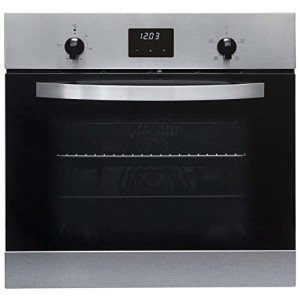Understanding Electric Ovens and Hobs: Your Guide to Cooking Efficiency
Electric ovens and hobs have changed the cooking landscape, providing home cooks and professional chefs a dependable, efficient, and consistent way to prepare meals. As technological developments continue to affect appliance design, the performance and performance of electric cooking systems have significantly enhanced. This short article delves into the features, advantages, and considerations surrounding electric ovens and hobs, supplying a comprehensive summary for anybody wanting to upgrade or buy kitchen devices.
What Are Electric Ovens and Hobs?
Electric ovens are kitchen devices created for baking, broiling, roasting, and other cooking methods that need regulated heat. They use electric coils or glowing heat elements to create and keep the desired temperature level. Electric hobs, often referred to as electric cooktops, are flat surfaces with heating aspects that allow pots and pans to be placed straight on them for cooking.
Table 1: Key Differences Between Electric Ovens and Hobs
| Feature | Electric Oven | Electric Hob |
|---|---|---|
| Main Function | Baking, roasting, broiling | Heating pots and pans for cooking |
| Heating Method | Electric coils or glowing elements | Induction, glowing, or ceramic elements |
| Operation Temperature Range | As much as 500 ° F (260 ° C | ) Varies by design; generally lower than ovens |
| Cooking Styles | Versatile; suitable for different dishes | Primarily stovetop cooking techniques |
| Space Requirement | Typically built into cabinets | Often standalone or integrated options |
| Energy Consumption | Generally higher, depending upon use | More energy-efficient with induction hobs |
Benefits of Electric Ovens and Hobs
When considering electric ovens and hobs, it's vital to understand their many advantages, which can enhance the cooking experience.
1. Consistent Heating
Electric ovens and hobs provide even and constant heating, which is important for numerous cooking methods. This makes sure that meals prepare uniformly, reducing the opportunities of overcooking or undercooking certain locations of food.
2. Security Features
Modern electric ovens and hobs come geared up with different safety functions to avoid accidents in the kitchen. For instance, numerous designs include automated shut-off functions, hot surface signs, and kid security locks.
3. Easy to Use
Unlike gas models, electric ovens and hobs are uncomplicated and user-friendly. The simpleness of turning on a dial or pressing a button makes them available for cooks of all skill levels.
4. Versatile Cooking Options
With various cooking approaches possible, from baking to simmering, electric designs are versatile adequate to accommodate a large variety of cooking designs and choices.
5. Cleaning and Maintenance
Electric ovens normally include smooth surfaces that are simple to tidy, particularly designs with self-cleaning capabilities. Hobs, especially induction types, likewise provide a flat surface area that is simple to wipe down, making maintenance a breeze.
Popular Types of Electric Ovens:
- Conventional Ovens: Ideal for conventional baking and roasting.
- Convection Ovens: Circulate hot air for faster, even cooking.
- Microwave Ovens: Use electro-magnetic radiation for quick heating and cooking.
- Toaster: Small countertop ovens for quick jobs.
Popular Types of Electric Hobs:
- Induction Hobs: Utilize magnetic fields for rapid heating and energy performance.
- Glowing Hobs: Feature electric coils that warm up to prepare food.
- Ceramic Hobs: Offer a smooth surface and are simple to clean.
Considerations When Choosing Electric Ovens and Hobs
While electric ovens and hobs use various advantages, a number of aspects should be taken into account to ensure the best fit for your kitchen:
1. Space Availability
Evaluate the offered kitchen space before purchasing. Determine whether you need an integrated model or a freestanding device, and measure the measurements carefully to guarantee a great fit.
2. Cooking Needs
Determine your cooking habits and preferences. If you regularly bake big quantities or cook complex meals, consider an oven with advanced functions like convection settings or several racks.
3. Energy Efficiency
Look for energy-efficient designs that can assist in saving on energy costs over time. Energy Star-rated appliances can be particularly cost-efficient.
4. Spending plan
Set a reasonable spending plan that represents both the preliminary purchase and continuous operating expense. In addition to the appliance cost, consider installation and potential repairs.
5. Additional Features
Consider whether features like wise technology, programmable settings, or steam cooking alternatives are essential for your cooking style.
Frequently asked question Section
Q: How do I clean my electric oven?
A: Most electric ovens included self-cleaning choices. If Ovens And Hobs does not have this function, enable the oven to cool, then wipe down surfaces with a mix of baking soda and water or a business oven cleaner.
Q: Is induction cooking safe?
A: Yes, induction cooking is thought about safe as the heating aspect only activates when compatible cookware is in contact with it, lowering the threat of burns.
Q: How long does it consider an electric oven to preheat?
A: Preheating times differ based upon the oven's design and temperature setting however normally range from 10 to 15 minutes.
Q: Can I use any pots and pans on an induction hob?
A: No, only ferromagnetic cookware works with induction hobs. Look for induction compatibility before usage to prevent damage.
Q: What is the difference in between a convection oven and a standard electric oven?
A: A convection oven consists of a fan that flows hot air, ensuring even cooking and decreased cooking times compared to a conventional electric oven, which does not have this feature.
Electric ovens and hobs offer a contemporary solution to various cooking requirements, providing efficiency and dependability in the kitchen. As consumers assess their options, understanding the features, types, and factors to consider will allow them to make educated choices. Whether one is a periodic cook or a culinary lover, electric devices can improve the overall cooking experience, bringing benefit and imagination to the table.

